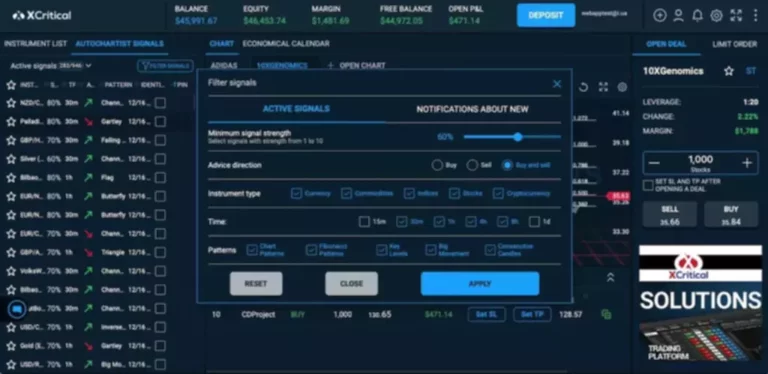Uniswap is an automated market maker that permits crypto users to deposit their assets into a shared pool, thereby enabling them to earn trading charges from the pool. An Automated Market Maker (AMM) is the underlying protocol that powers some forms of decentralized exchange (DEX). Basically, an AMM system creates a market digitally, by producing algorithmically controlled liquidity swimming pools to facilitate trades for customers. Another notable entry amongst Automated Market Makers in present times would discuss with Kyber Network.
These charges are typically distributed within the type of LP tokens, also called liquidity supplier tokens. The price of the tokens in the liquidity pool may be set by external oracles or automatically determined by the good contract parameters throughout setup. Both of those setups permit for market makers to have higher management of the pool in occasions of excessive volatility. There are even some who use multiple bid ask orders on varied exchanges for the arbitrage opportunity. Additionally, Balancer gives liquidity providers the option to obtain charges for exchaning any two assets in the pool, rather than just two explicit belongings.

A trader might then swap 500k dollars value of their very own USDC for ETH, which would elevate the value of ETH on the AMM. With the upcoming launch of the CRV token, the staff has indicated that every one liquidity suppliers (starting from day 1) shall be retroactively rewarded in CRV tokens. The CRV token will enable the governance of the protocol where customers can introduce worth seize mechanisms that benefit the CRV token holders and longterm liquidity providers essentially the most. Curve features incentivized pools that allow liquidity suppliers to earn an extra APY within the type of the sponsor’s project token like Synthetix and Ren.
What Is Crypto Gambling? Full Information To On-line Crypto Playing
You can consider most of these trades as peer-to-peer (P2P) transactions between buyers and sellers. However, DEXs that execute transactions utilizing AMMs are effectively peer-to-contract (P2C) transactions. These transactions happen without conventional order books or counterparties.
- Uniswap’s liquidity swimming pools can encompass solely two pairs, which may then be paired towards any ERC20 token.
- The zero.2% network fee collected from all trades is contributed to an allocation construction, which is voted on through the governance of the protocol.
- AMMs have an quite lots of benefits over standard centralized exchanges, including more liquidity, ease of use, and accessibility.
- Not only can you commerce trustlessly utilizing an AMM, however you could also turn out to be the house by providing liquidity to a liquidity pool.
- As lengthy as you do not withdraw deposited tokens at a time that the pool is experiencing a shift in price ratio, it is still potential to mitigate this loss.
Though these formulation range between protocols, the formulation utilized by Uniswap is a wonderful example of what quantity of AMMs work. Due to their distinctive method of providing liquidity, automated market makers (AMMs) have grown in favor within the crypto group. When the prices of assets deposited to liquidity swimming pools fall and the ratio of the token pairs is unfavorable, there is no way to reverse this. As such, when buying and selling fees don’t offset these losses, they’re indeed permanent.
Slippage
Limit orders additionally permit you to specify a minimal price for sell orders as nicely as a most worth for buy orders. This protects you from surprising market actions and guarantees that your trades are performed at the value you select. Each platform has its own particular features and advantages, like Uniswap’s simplicity of use, SushiSwap’s number of DeFi providers, and Balancer’s adaptability in pool design. Which platform is chosen ultimately relies on the person calls for and preferences of the consumer.
While AMM supplies a singular solution to the cryptocurrency business, it’s still in its infancy, and as time passes a number of variations will sprout as we’ve seen. These variations will provide more efficiency to AMM and beyond that serve as a gateway to extra monetary possibilities. As a DeFi participant, it’s essential to know how the several fashions of AMM works and the way to take benefit of them.

However, the normal market maker course of is type of time-consuming when smart contracts are involved. Therefore, Automated Market Makers is an inevitable requirement in such eventualities, without any doubt. So there’s no need for counterparties, but somebody still has to create the market, right?
What Are Wrapped Tokens?
From the explanation above, it’s clear that crypto market makers work around the clock to reduce back price volatility by providing the appropriate level of liquidity. What if there was a method to democratize this process such that the common particular person might operate as a market maker? One of the most popular fashions adopted by automated market maker platforms is the constant What Is an Automated Market Maker product market maker (CPMM) model. Below we take a glance at a choice of the preferred AMMs and some of the key variations between them. Still, the smart contracts utilized in AMMs need liquidity so as to operate. In this article, we’re going to take a look at how AMMs work and why they’re so popular.
Today, we are going to discover the three most popular automated market makers that are currently obtainable within the DeFi ecosystem. Automated market makers (AMMs) have turn out to be all the buzz, largely for changing the standard exchange-listing course of and limit-order books with a permissionless liquidity pool run by algorithms. If you would possibly be selling BNB in return for BUSD on the Binance DEX, then you might have someone on the opposite side of the transaction who purchases BNB with the BUSD of their possession. On the opposite hand, you can find a easy answer to “How do automated market makers work? The next essential facet in a information on automated market makers explained correctly refers to the working of AMMs.
The order book exchange definitely presents a confirmed approach for global finance, which entails multiple market makers alongside many buyers. Cryptocurrency has obviously been one of the formidable technological interventions in latest times, with a particular focus on decentralization. It has introduced the possibility for executing monetary transactions between two events without any intermediaries for exchanging belongings in a trustless method. The growth of centralized exchanges corresponding to Coinbase has been quite commendable. Over the final couple of years, AMMs have confirmed to be progressive methods for enabling decentralized exchanges.
Liquidity pools could be optimized for different functions, and are proving to be an important instrument in the DeFi ecosystem. In summary, automated market makers (AMMs) and decentralized exchanges (DEXs) provide a permissionless, non-custodial different to centralized buying and selling platforms. Replacing order books with liquidity swimming pools, AMMs enable liquidity providers to earn a passive earnings with crypto and make fast token swaps without intermediaries. This is made potential with the help of liquidity providers and liquidity swimming pools.
The liquidity swimming pools are basically a large pile of funds that traders may commerce towards. Liquidity suppliers can earn a sure share of fees from the trades occurring of their pool for providing liquidity in the automated market maker algorithm. As a matter of fact, liquidity suppliers are some of the necessary aspects in answers to “How do automated market makers work? However, the liquidity pool has buying and selling pairs similar to ETH/DAI or ETH/USDT.
Liquidity Pool – An Important Issue
Once you stake your fund, you will obtain liquidity supplier tokens that denote your share of the liquidity deposited in a pool. These tokens additionally make you eligible to obtain transaction charges as passive earnings. You could deposit these tokens on different protocols that settle for them for extra yield farming opportunities. To withdraw your liquidity from the pool, you would have to flip in your LP tokens.

So in a primary sense, AMMs benefit all users of DeFi by expanding the array of options obtainable, whereas remaining true to the objective of decentralization. Balancer is one other top addition among AMM crypto exchanges with exceptional similarities to Uniswap. However, it also contains a broader assortment of features similar to customized pool ratios, multi-token pools, and dynamic pool charges.
Curve additionally presents a small deposit bonus to liquidity providers that deposit the stablecoin with the smallest share within the pool to incentivize a wholesome liquidity utilization ratio between them. When a pool is created, the parameters permit for a customized pool charge, enabling it to compete in opposition to Uniswap and other AMMs. The pool fee may also be adjusted based on volatility and the market situations across the set assets within the pool. The zero.2% community charge collected from all trades is contributed to an allocation construction, which is voted on by way of the governance of the protocol. Unlike Kyber Network, the worth in the Uniswap sensible contract can’t be configured or controlled.













